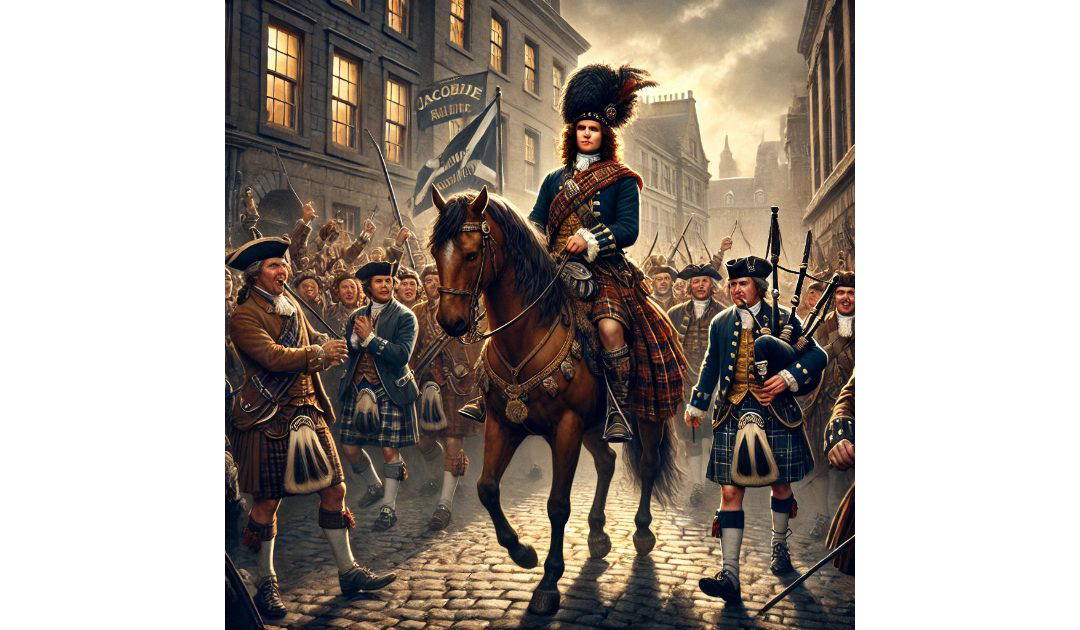On 29th November 1745 Bonnie Prince Charlie’s Jacobite army moved into Manchester and occupied Carlisle. Bonnie Prince Charlie, born Charles Edward Stuart on December 31, 1720, was a charismatic figure who became the symbol of the Jacobite cause to restore the Stuart monarchy in Britain. As the grandson of the deposed King James II of England and VII of Scotland, Charles embodied the hopes of his supporters who sought to overturn the Protestant Hanoverian dynasty and reinstate a Catholic monarch.
The Stuart dynasty had been exiled following the Glorious Revolution of 1688, when James II was replaced by his Protestant daughter Mary II and her husband, William of Orange. The Jacobites, loyal supporters of the Stuarts, sought to restore the family to the throne. Charles’s father, James Francis Edward Stuart (the “Old Pretender”), failed in his efforts to reclaim the crown, and the mantle of leadership passed to Charles, earning him the affectionate nickname “Bonnie Prince Charlie.”
Charles’s most notable chapter in history began in 1745, when he landed in Scotland to lead a daring attempt to restore his family’s rule. With little initial support, he raised a Jacobite army largely composed of Scottish Highlanders. His charm and determination inspired loyalty among his followers, and the campaign began successfully. The Jacobites won key victories, including the Battle of Prestonpans, and even marched as far south as Derby, England, threatening the Hanoverian regime.
However, lacking widespread support in England and facing logistical challenges, the Jacobite army retreated to Scotland. On April 16, 1746, the rebellion met its tragic end at the Battle of Culloden, near Inverness. The Hanoverian forces, led by the Duke of Cumberland, crushed the Jacobite army in a decisive and brutal defeat. Culloden marked the end of the Stuart claim to the throne and led to harsh repercussions for the Scottish clans who had supported Charles.
After Culloden, Charles became a fugitive, evading capture through the rugged Highlands and islands of Scotland. With the help of loyal supporters, including the famous Flora MacDonald, who disguised him as a maid to smuggle him to safety, he eventually escaped to France. His adventurous flight became legendary, cementing his image as a romantic hero.
Charles spent the rest of his life in exile, moving between France and Italy. His later years were marked by disappointment, illness, and a decline into alcoholism. He died in Rome on January 31, 1788. Unless I am mistaken, his was the last attempt to restore a Catholic monarch to the English throne.
Although Sir Anthony Standen was a Catholic, he played a pivotal role in preventing an earlier attempt by providing vital intelligence on the preparation, strength, and plans of the Spanish Armada.

